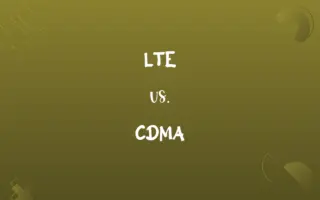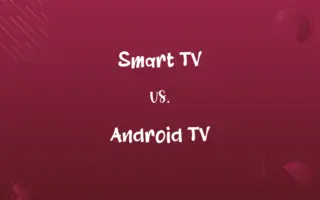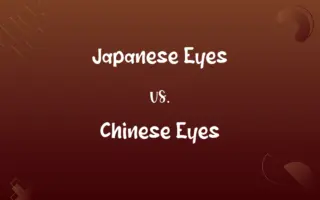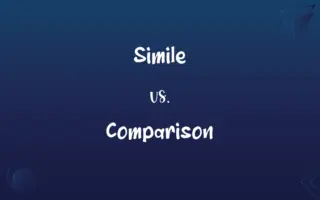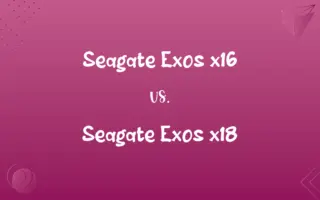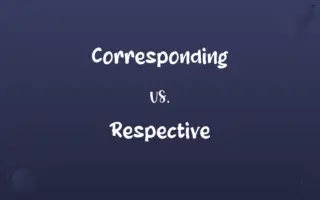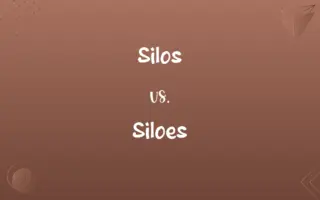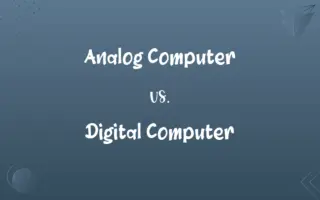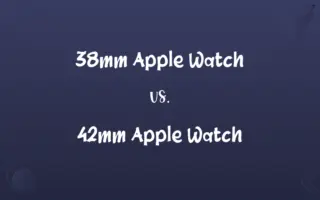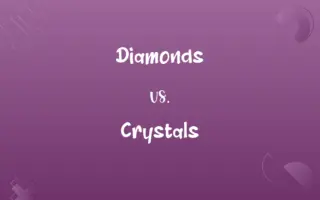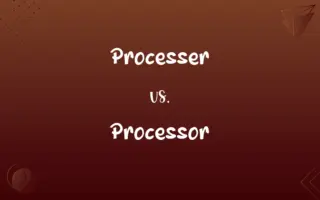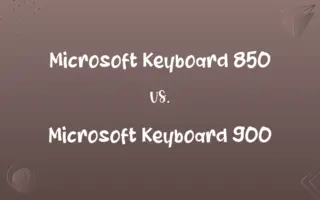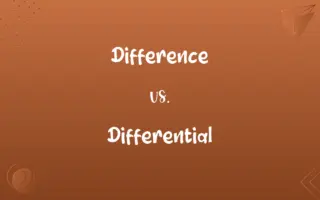PCI 2.0 vs. PCI 2.1: Know the Difference

By Shumaila Saeed || Published on February 17, 2024
PCI 2.0 is a computer bus standard with a 32-bit configuration and 5 V signaling, while PCI 2.1 introduced support for 3.3 V signaling and 66 MHz clock speed.

Key Differences
PCI 2.0, or Peripheral Component Interconnect version 2.0, is a standard for internal computer buses, introduced to improve data transfer between components inside a computer. It operates at a 66 MHz clock speed with a 32-bit or 64-bit data path. PCI 2.1, an evolution of this standard, maintained the basic structure but introduced support for a 3.3V signaling environment, allowing for more power-efficient operation.
Shumaila Saeed
Feb 17, 2024
One of the main features of PCI 2.0 is its compatibility with 5V signaling, making it suitable for a wide range of hardware during its time. PCI 2.1, in contrast, focused on enhancing compatibility with newer hardware by supporting both 5V and 3.3V signaling, allowing for greater flexibility and hardware compatibility.
Shumaila Saeed
Feb 17, 2024
In terms of data transfer, PCI 2.0 offered a reliable platform with a peak data transfer rate of up to 533 MB/s for 64-bit at 66 MHz. With PCI 2.1, the data transfer rates remained largely unchanged, but the standard provided improved performance through better signaling and compatibility with faster and more power-efficient hardware.
Shumaila Saeed
Feb 17, 2024
PCI 2.0 was widely adopted in many PCs and servers for connecting high-speed components like network cards and graphics cards. PCI 2.1 built upon this foundation, ensuring that newer devices could also connect seamlessly, while maintaining backward compatibility with PCI 2.0 devices.
Shumaila Saeed
Feb 17, 2024
Finally, both PCI 2.0 and PCI 2.1 were eventually superseded by newer technologies like PCI Express, but they played crucial roles in the evolution of internal computer connectivity, with PCI 2.1 marking a significant step towards modernizing the PCI standard.
Shumaila Saeed
Feb 17, 2024
ADVERTISEMENT
Comparison Chart
Voltage Signaling
Supports only 5V signaling
Supports both 5V and 3.3V signaling
Shumaila Saeed
Feb 17, 2024
Data Transfer Rate
Up to 533 MB/s (64-bit at 66 MHz)
Similar rates but with improved signaling
Shumaila Saeed
Feb 17, 2024
Compatibility
Suited for older 5V hardware
Better suited for newer, varied hardware
Shumaila Saeed
Feb 17, 2024
Hardware Connection
Widely used for various components
Enhanced compatibility with new devices
Shumaila Saeed
Feb 17, 2024
ADVERTISEMENT
PCI 2.0 and PCI 2.1 Definitions
PCI 2.0
PCI 2.0 is a computer bus standard with 5V signaling.
Our older graphics card uses the PCI 2.0 interface.
Shumaila Saeed
Jan 19, 2024
PCI 2.1
PCI 2.1 is an advanced version of PCI with 3.3V support.
Our new sound card requires a PCI 2.1 slot for its 3.3V requirement.
Shumaila Saeed
Jan 19, 2024
PCI 2.0
PCI 2.0 operates at a 66 MHz clock speed.
This motherboard supports PCI 2.0 with a 66 MHz clock speed.
Shumaila Saeed
Jan 19, 2024
PCI 2.1
PCI 2.1 offers improved performance through better signaling.
PCI 2.1's improved signaling ensures more stable performance.
Shumaila Saeed
Jan 19, 2024
PCI 2.0
PCI 2.0 supports a peak data transfer rate of up to 533 MB/s.
The PCI 2.0 bus can handle data transfer rates up to 533 MB/s.
Shumaila Saeed
Jan 19, 2024
ADVERTISEMENT
PCI 2.1
PCI 2.1 maintains a 66 MHz clock speed like PCI 2.0.
This server's motherboard has PCI 2.1 slots, still running at 66 MHz.
Shumaila Saeed
Jan 19, 2024
PCI 2.0
PCI 2.0 offers a 32-bit or 64-bit data path.
We chose a 64-bit PCI 2.0 slot for faster data processing.
Shumaila Saeed
Jan 19, 2024
PCI 2.1
PCI 2.1 enhances compatibility with newer hardware.
We upgraded to PCI 2.1 for better hardware support.
Shumaila Saeed
Jan 19, 2024
PCI 2.0
PCI 2.0 is used for connecting internal computer components.
We installed the network card into the PCI 2.0 slot.
Shumaila Saeed
Jan 19, 2024
PCI 2.1
PCI 2.1 ensures backward compatibility with PCI 2.0 devices.
Our PCI 2.0 network card works fine in the PCI 2.1 slot.
Shumaila Saeed
Jan 19, 2024
Repeatedly Asked Queries
What is PCI 2.0?
It's a computer bus standard used for connecting internal components, operating at 66 MHz.
Shumaila Saeed
Feb 17, 2024
What's the data transfer rate of PCI 2.0?
Up to 533 MB/s for 64-bit configurations at 66 MHz.
Shumaila Saeed
Feb 17, 2024
Is PCI 2.1 suitable for modern high-speed devices?
It's less suitable compared to newer standards like PCI Express.
Shumaila Saeed
Feb 17, 2024
Are PCI 2.0 and 2.1 compatible with each other?
Generally, yes, if the voltage requirements are met.
Shumaila Saeed
Feb 17, 2024
Did PCI 2.1 introduce any speed improvements?
The speed remained similar, but PCI 2.1 improved signaling and hardware compatibility.
Shumaila Saeed
Feb 17, 2024
Can I use a PCI 2.1 card in a PCI 2.0 motherboard?
Yes, if the voltage and other specifications are compatible.
Shumaila Saeed
Feb 17, 2024
Can PCI 2.1 cards work in PCI 2.0 slots?
It depends on the voltage compatibility; some cards may work if they support 5V signaling.
Shumaila Saeed
Feb 17, 2024
How do I know if my device is PCI 2.0 or 2.1?
Check the device specifications or documentation for details.
Shumaila Saeed
Feb 17, 2024
Are PCI 2.0 and 2.1 still used today?
They're largely outdated but may still be found in older systems.
Shumaila Saeed
Feb 17, 2024
What is PCI 2.1?
An evolution of PCI 2.0, it supports both 3.3V and 5V signaling environments.
Shumaila Saeed
Feb 17, 2024
What devices typically use PCI 2.0?
Older graphics cards, network cards, and sound cards often use PCI 2.0.
Shumaila Saeed
Feb 17, 2024
What's the main advantage of PCI 2.1 over 2.0?
Improved power efficiency and compatibility with newer hardware.
Shumaila Saeed
Feb 17, 2024
Do PCI 2.0 and 2.1 support plug-and-play functionality?
Yes, they generally support plug-and-play for easy installation.
Shumaila Saeed
Feb 17, 2024
Do PCI 2.0 and 2.1 require drivers?
Yes, appropriate drivers are needed for proper operation.
Shumaila Saeed
Feb 17, 2024
What's the maximum length of a PCI 2.0 and 2.1 card?
The standard length is about 312 mm, but it can vary.
Shumaila Saeed
Feb 17, 2024
How do PCI 2.0 and 2.1 handle data transfer?
They use parallel transmission to transfer data over multiple pins simultaneously.
Shumaila Saeed
Feb 17, 2024
Are there any physical differences between PCI 2.0 and 2.1 slots?
The slots are physically similar, but PCI 2.1 slots may have different keying for voltage support.
Shumaila Saeed
Feb 17, 2024
Can I use multiple PCI 2.0 or 2.1 cards in one system?
Yes, if there are enough slots and power supply capacity.
Shumaila Saeed
Feb 17, 2024
Is there a difference in power consumption between PCI 2.0 and 2.1?
PCI 2.1 can be more power-efficient due to its 3.3V support.
Shumaila Saeed
Feb 17, 2024
What's the difference in voltage signaling between PCI 2.0 and 2.1?
PCI 2.0 is limited to 5V, while PCI 2.1 supports both 3.3V and 5V.
Shumaila Saeed
Feb 17, 2024
Share this page
Link for your blog / website
HTML
Link to share via messenger
About Author
Written by
Shumaila SaeedShumaila Saeed, an expert content creator with 6 years of experience, specializes in distilling complex topics into easily digestible comparisons, shining a light on the nuances that both inform and educate readers with clarity and accuracy.




